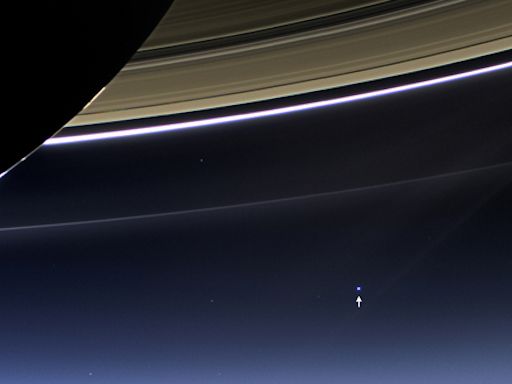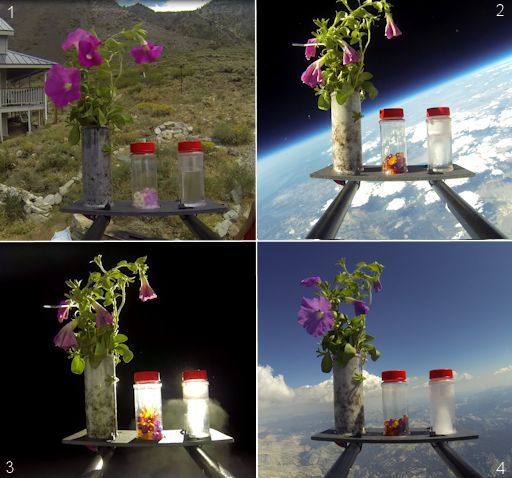Listen to radar echoes from satellites and meteors, live on listener-supported Space Weather Radio. | | |
VERY QUIET SUN: Solar activity has shifted from low to very low. None of the sunspots on the Earthside of the sun is actively flaring. NOAA forecasters expect this situation to continue for the next 24 hours. They estimate a slim 10% chance of M-class flares and no more than a 1% chance of X-flares on July 23rd. Solar flare alerts: text, voice.
PALE BLUE DOT: Last Friday, NASA's Cassini spacecraft photographed Earth through the rings of Saturn. Our planet has been photographed twice before from the outer solar system, but this is the first time it has been recorded in natural color, as human eyes would see it. In the image, just released by NASA, Earth is a pale blue dot:

Normally, distant spacecraft cannot photograph Earth because Earth is so close to the sun. Glare prevents imaging. Cassini took advantage of a rare eclipse of the sun by Saturn itself. With the sun blocked by the body of the ringed planet, Earth became visible to Cassini's cameras.
The picture of Earth is only one footprint in a mosaic of 33 footprints covering the entire Saturn ring system. "Seeing the whole mosaic of the backlit rings when it is put together will be incredible," says Linda Spilker, Cassini project scientist at NASA's Jet Propulsion Laboratory. Researchers are working on the ensemble now, and they expect it to be ready in a few weeks.
Realtime Space Weather Photo Gallery
MAMMATUS OVER MICHIGAN: Yesterday, a rain squall blew through Iron Mountain, Michigan, and left some unusual clouds in its wake. Laura Tappy snapped this picture:

"There was heavy rain for about five minutes," describes Tappy. "When it ended, the sky turned an eerie yellow color and these mammatus clouds appeared."
Named for their resemblance to a cow's underbelly,
mammatus clouds sometimes appear at the end of severe thunderstorms when the thundercloud is breaking up. Researchers have called them an "
intriguing enigma," because no one knows exactly how and why they form. The clouds are fairly common but often go unnoticed because potential observers have been chased indoors by the rain. If you are one of them, go back outside when the downpour stops; you could witness a beautiful mystery in the sky.
Realtime Space Weather Photo Gallery
PETUNIAS AT THE EDGE OF SPACE: The students of Earth to Sky Calculus have recovered the petunias they sent to the stratosphere last Friday. The flowers left Earth July 19th onboard a helium research balloon, ascended to 110,570 feet, then parachuted back to Earth on the same day. These four screenshots, culled from more than 2 hours of high-definition video, summarizes what happened:

(1) The flowers were pink and alert when they left Earth. (2) An hour later, in the stratosphere, the flowers appear limp and wilted, but they were not. Actually, the flowers were frozen. The petals were bent downward by onrushing wind during the ascent, and they froze in place as the petunias passed through the tropopause where the temperature was -63 C. (3) You can see that the flowers were frozen stiff because when the balloon exploded, they did not move at all. (4) Finally, as the payload parachuted back to Earth the flowers thawed and turned deep purple.
The petunias were just one of several experiments flown to the stratosphere on July 19th during Cassini's historic photo-shoot of Earth through the rings of Saturn. Other items on board were selected competitively from more than 1056 entries suggested by Spaceweather.com readers. First place winners of the competition received free telescopes from Explore Scientific.
For updates about data from this flight, please follow the Earth to Sky Calculus Twitter feed.
Realtime Space Weather Photo Gallery
Realtime Aurora Photo Gallery
Realtime Noctilucent Cloud Photo Gallery
[previous years: 2003, 2004, 2005, 2006, 2007, 2008, 2009, 2011]
Realtime Comet Photo Gallery

